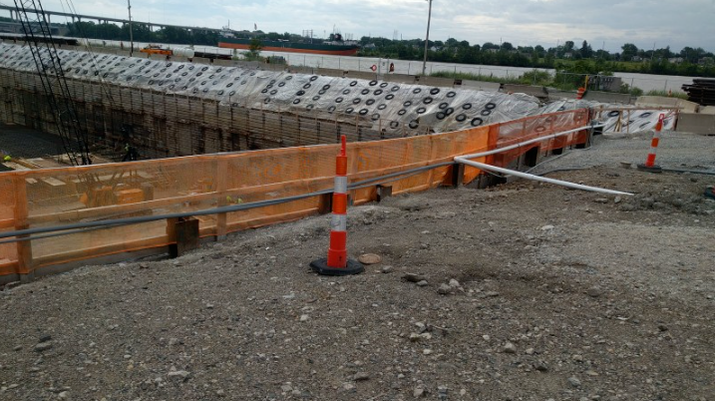Specialist Civil Geotechnical Engineering Providers for Complicated Projects
Specialist Civil Geotechnical Engineering Providers for Complicated Projects
Blog Article
How Consulting Engineers Enhance Geotechnical Design Projects: Insights Into Their Knowledge, Methodologies, and Collaborative Approaches
Consulting designers are crucial in enhancing geotechnical engineering projects, applying their specialized understanding to browse the complexities of subsurface problems. Their collaborative approaches foster communication among diverse task stakeholders, ultimately forming the task's trajectory.
Duty of Consulting Engineers
The knowledge of speaking with designers in geotechnical design is essential to the effective execution of construction tasks. These professionals play a pivotal function in evaluating dirt and rock homes, which are crucial aspects influencing design and construction choices. By conducting detailed site examinations, seeking advice from designers collect crucial information that educates the layout procedure, guaranteeing projects are developed on secure and ideal ground.
Consulting engineers additionally give important understandings into threat monitoring (geotechnical geologist). They identify prospective geotechnical hazards, such as landslides, soil liquefaction, and settlement problems, enabling stakeholders to implement effective reduction methods. Their know-how help in optimizing structure designs, which can lead to substantial expense savings and enhanced security
Additionally, speaking with designers act as a vital link between job proprietors, engineers, and service providers. Their capability to equate intricate geotechnical information into workable suggestions cultivates partnership and promotes educated decision-making throughout the project lifecycle. This multidisciplinary method not only enhances project performance yet additionally makes sure conformity with regulatory standards and finest methods.
Key Approaches in Geotechnical Design

One key methodology is website examination, which includes performing area examinations and lab analyses to collect information on subsurface problems. Strategies such as Requirement Penetration Testing (SPT) and Cone Infiltration Screening (CPT) are commonly made use of to evaluate dirt stratigraphy and strength. Furthermore, geophysical approaches, including seismic and electric resistivity studies, supply non-invasive methods to examine subsurface qualities.
An additional vital technique is mathematical modeling, which enables designers to imitate numerous scenarios and predict exactly how soil-structure communications will act under different loading conditions. Finite Component Analysis (FEA) is a typical method used in this context.
Additionally, the style of foundations, preserving structures, and earthworks depends heavily on these techniques - geotechnical geologist. By incorporating innovative logical devices with field information, consulting designers can develop tailored services that deal with particular task challenges, eventually adding to the stability and security of construction jobs
Relevance of Dirt Analysis
Dirt evaluation functions as a foundational component in geotechnical design, supplying essential insights into the physical and more chemical residential or commercial properties try this web-site of dirt required for reliable building preparation. Recognizing dirt features is critical for determining its load-bearing capability, drain habits, and potential for settlement or instability. Thorough soil investigations, including tasting and research laboratory testing, aid determine specifications such as soil kind, moisture content, density, and shear strength.
These evaluations inform the choice of suitable construction strategies and materials, inevitably influencing task security and longevity. Natural dirts might call for various foundation designs compared to granular dirts, demanding tailored design remedies. Additionally, dirt evaluation aids in determining contaminants that might present risks to human health and wellness or the atmosphere, enabling for the advancement of mitigation techniques.
Incorporating dirt evaluation right into the onset of task growth assists to minimize unanticipated challenges, making sure that designers can anticipate and attend to possible concerns before they rise. By developing a thorough understanding of the site problems, seeking advice from designers can maximize style efficiency and minimize prices, therefore enhancing the total success of geotechnical engineering projects.
Collaborative Methods in Tasks
Successful geotechnical projects usually hinge on joint techniques that combine varied expertise from different disciplines. Efficient cooperation amongst speaking with designers, geologists, ecological scientists, and building and construction specialists is critical for resolving intricate challenges and maximizing job results. By leveraging the one-of-a-kind abilities and understanding of each staff member, tasks can gain from an all natural understanding of the site conditions, governing demands, and design restrictions.
Routine communication and interdisciplinary conferences assist in the sharing of understandings and promote a society of synergy. These joint efforts enable the identification of potential dangers early in the task lifecycle, permitting prompt mitigation strategies. Furthermore, integrating feedback from stakeholders, including regional communities and regulatory companies, guarantees that all point of views are thought about, improving job approval and conformity.
Furthermore, the integration of innovative technologies, such as Geographic Info Solution (GIS) and Structure Details Modeling (BIM), additional improves collaboration. These devices permit the real-time sharing of information and visualization of geotechnical conditions, promoting notified decision-making. Eventually, a joint technique not just improves job execution but check that likewise lays the foundation for innovative solutions to intricate geotechnical engineering difficulties.
Influence On Task Outcomes

Consulting designers utilize innovative methodologies such as risk analysis and anticipating modeling, which improve the accuracy of task projections. Their capacity to integrate innovative modern technologies, like geotechnical instrumentation and information analytics, additionally refines the style and construction procedures. As an outcome, tasks experience enhanced efficiency, reduced costs, and minimized delays.
Moreover, cultivating efficient interaction and cooperation among employee improves analytical capabilities. When challenges arise, an unified front enables quick identification of services, stopping prospective troubles. Ultimately, the joint initiatives of speaking with engineers add to better results, guaranteeing that projects satisfy both regulative requirements and client assumptions.
Verdict

Report this page